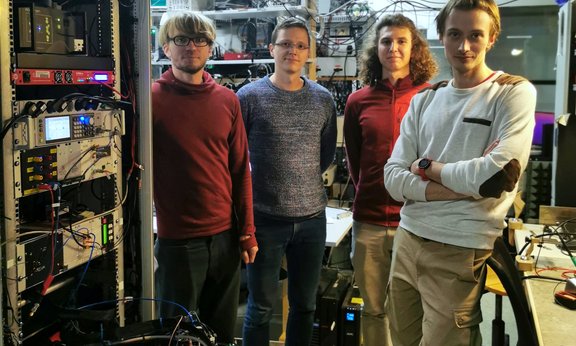Many quantities in nature are directional - they possess not only a strength but also a direction. If you want to determine such a quantity, you usually have to measure more than one component – that is, strength in a particular direction – and then reconstruct the original quantity. In our classical world, one simply measures the components one after the other, but not so in the quantum world. There, some quantities are intertwined, and the measurement of one quantity also affects the other - these are known as ''conjugate'' quantities. For example, when an atom is illuminated by a laser to determine its position, the photons absorbed by the atom change the particle's velocity. “Position and velocity of the atom cannot be measured independently of each other,” explains Christian Marciniak from the Department of Experimental Physics at the University of Innsbruck, Austria.
Parallel measurement of conjugate quantities
In March of this year, physicists at the University of Innsbruck already presented the first programmable quantum sensor. This method allows the optimal measurement of a single parameter on a given quantum machine. If another, conjugate parameter needs to be determined, this method requires the measurements to be performed one after the other. Theoretical physicists at the Australian National University in Canberra have now developed a new method with which conjugate quantities can instead be optimally measured in parallel. In an international collaboration, this method was tested on about a dozen quantum computers: an ion trap quantum computer at the University of Innsbruck, a photonic quantum computer at the University of Jena in Germany, a computer with superconducting quantum bits at the Fraunhofer Research Institute for Optics and Precision Engineering in Jena, and several commercial quantum computers with superconducting quantum bits.
Measurement with entangled copies of a quantum state
The new method is based on measuring with one or more copies of a quantum state. “These copies are entangled with each other during the measurement. In this way, two parameters of a quantum state that do not commute can also be measured simultaneously,” explains Christian Marciniak. “We tested this method on our quantum computers for one and two copies.” With one copy, some of the quantum computers achieved the optimal precision predicted by the theorists, which is exactly the same as the best classical result. With two copies, the measurement accuracy is still at the expected value for only a few quantum computers, with most performing worse than classical methods due to accumulating errors in the computation. “However, quantum computers with error-corrected qubits will be able to gainfully measure with more and more copies in the future,” the experimentalist is convinced. “Importantly, our measurements have shown that the method works well when there is still a lot of noise in the signal. That's a key point for its practical application that tends to be overlooked.”
Potential applications
Quantum technologies will enable us to determine many physical parameters even more precisely than before. In applications, this can offer many advantages. As an example, Innsbruck quantum physicist Thomas Monz cites imaging techniques in medicine: “In medical imaging, magnetic fields are used everywhere. A method that measures more than one component of these fields simultaneously offers great advantages over classical methods. This could shorten examination time or further improve resolution.” However, there are still a few hurdles to overcome before that point can be reached. Through their current work, the researchers from Australia, Germany, the United Kingdom, Singapore, and Austria are improving the understanding of these measurements and paving the way for future technological applications.
The research was financially supported by the Austrian Science Fund FWF, the European Union and the Federation of Austrian Industries Tyrol, among others.

